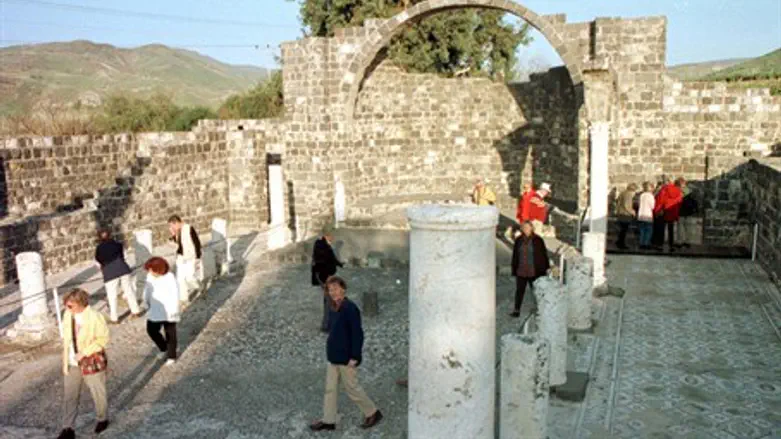
A large marble board containing Hebrew letters found Wednesday during University of Haifa's excavations at the Kursi National Park prove the ancient settlement was either a Jewish or Jewish-Christian town.
Located near the eastern shore of the Sea of Galilee, the national park also holds the ruins of a Byzantine-era Christian monastery. It was named Kursi after a nearby Syrian town.
An ancient town of Kursi, however, is also believed to exist. It has been identified in Christian tradition as the site of the so-called "Miracle of the Swine," where Jesus healed one or two men possessed by demons by driving them into a herd of pigs.
"This first evidence points to the existence of a Jewish settlement and strengthens the theory, which until now has been folklore, that the settlement is Kursi - the place Jesus visited and performed the famous 'Miracle of the Swine' according to the New Testament," Prof. Michael Atzi, one of the directors of the excavation site, told Channel 10.
The writing engraved on the board found Wednesday is in Aramaic, albeit with Hebrew characters. It is estimated to be 1,500 years-old.
Excavators have already managed to read two words: "Amen" and "Marmariya" - which apparently means "marble," though other researchers believe it is an allusion to Mary, the mother of Jesus.
"The existence of a Jewish settlement on the eastern shores of the Galilee is a very rare thing," Artzi noted. "Until now we had no proof that Jewish settlements, which have disappeared over the years, did actually exist at that time near the Galilee's shores, except for Migdal."